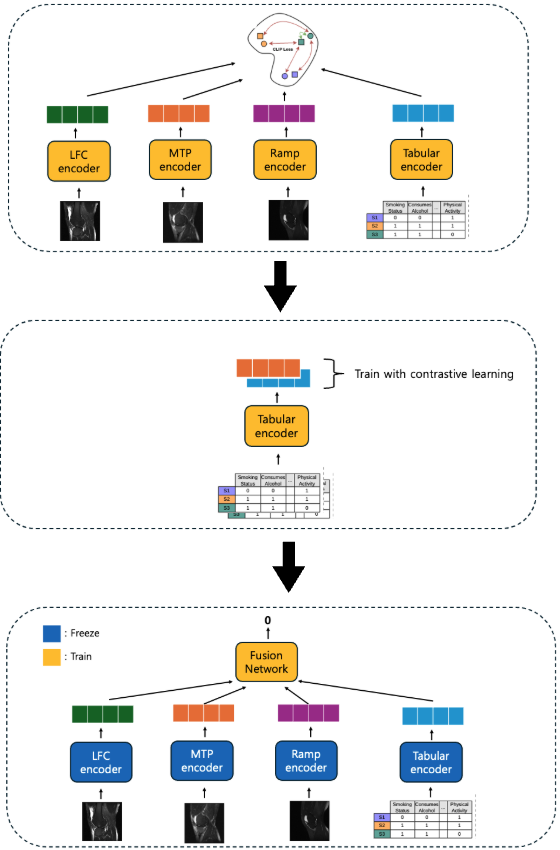Representation Learning
Background
Ramp lesions are a common condition, but they are difficult to detect.
Problem Definition
Previous studies performed binary classification of ramp lesions using only tabular data with machine learning techniques, not deep learning. However, this approach showed limitations in accuracy. We aim to improve accuracy by combining image data as an additional feature.
Solution
We proposed a three-stage training method:
- First stage: Train an image encoder through contrastive learning between image and tabular data.
- Second stage: Train a table encoder through self-supervised learning.
- Third stage: Train a fusion network that combines the image and table encoders.
Achievements
- Improved classification performance by approximately 20% compared to existing machine learning methods.
- Scheduled for submission to The American Journal of Sports Medicine (Impact Factor: 4.5).
My Role
- As the first author, I designed the methodology, implemented it, and conducted the experiments.

Method overview.